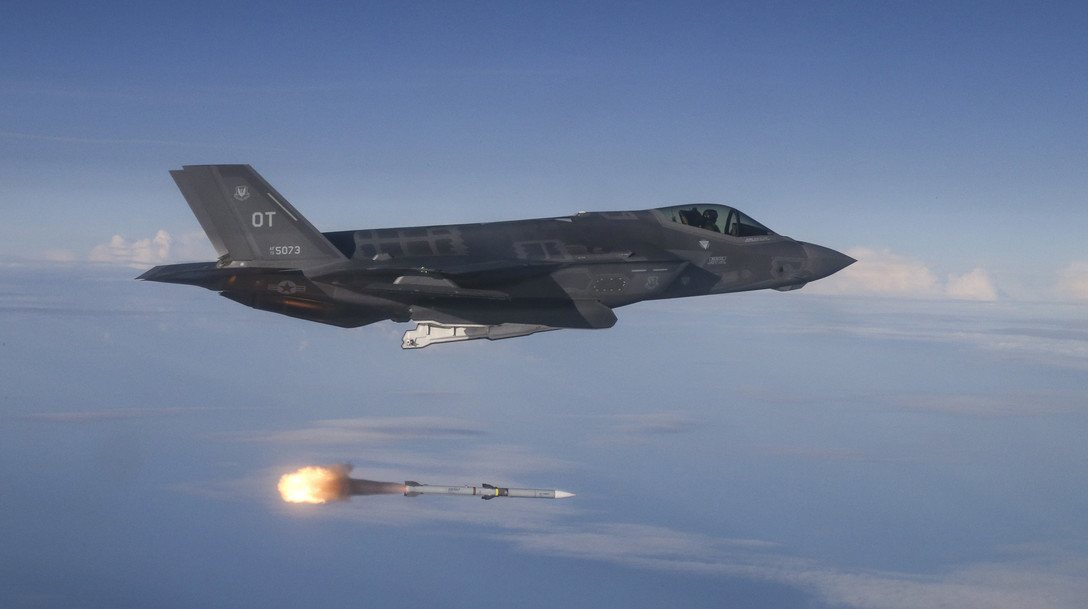
UK to Acquire 12 F-35A Fighter Jets with Nuclear Weapon Capability

 :
| Updated On: 25-Jun-2025 @ 1:55 pm
:
| Updated On: 25-Jun-2025 @ 1:55 pmSHARE
The United Kingdom will significantly expand its nuclear deterrent by purchasing at least 12 F-35A fighter jets, Prime Minister Keir Starmer’s office announced. This acquisition—described by Downing Street as “the biggest strengthening of the UK’s nuclear posture in a generation”—will, for the first time since the Cold War, give the Royal Air Force the ability to deliver tactical nuclear weapons from the air. Starmer is scheduled to unveil the plan at Wednesday’s NATO summit in The Hague, where alliance leaders are poised to raise their minimum defence-spending benchmark from 2 percent to 5 percent of GDP. Until now, Britain’s nuclear deterrence has relied exclusively on submarine-launched Trident missiles; adding dual-capable aircraft introduces a second, more flexible delivery option.
The F-35A, built by Lockheed Martin in the United States, is closely related to the short-take-off, vertical-landing F-35B variant already flown by the Royal Air Force and Royal Navy. Unlike the F-35B—which is optimised for Britain’s two new aircraft carriers—the conventional-take-off F-35A can carry U.S. B61-family gravity bombs in addition to precision-guided conventional munitions. Seven other NATO members, including the United States, Germany, Italy and the Netherlands, already station dual-capable aircraft in Europe, so the UK’s purchase aligns it with existing alliance nuclear-sharing arrangements. London says the jets will be based at RAF Marham in Norfolk, home to the UK’s current F-35B fleet. Roughly 15 percent of the global F-35 supply chain already resides in Britain, and officials estimate that buying and supporting the additional aircraft will sustain around 20,000 domestic jobs.
In a written statement, Starmer argued that “radical uncertainty” in global security means the UK can “no longer take peace for granted,” making large-scale investment in national defence imperative. He characterised the F-35As as ushering in “a new era” for the “world-leading Royal Air Force,” enhancing Britain’s ability to deter hostile actors who threaten the UK or its NATO allies. NATO Secretary-General Mark Rutte welcomed the move as “yet another robust British contribution,” praising London’s willingness to shoulder a larger share of the alliance’s nuclear burden. The aircraft and warheads would operate under NATO’s long-standing nuclear dual-capable aircraft mission, which requires national pilots but retains U.S. custody of the weapons until wartime release.
The timing of the announcement dovetails with a broader European defence-spending surge prompted by Russia’s aggression in Ukraine and fears of renewed great-power rivalry. Britain has already pledged to meet the forthcoming 5-percent GDP spending target and has embarked on parallel programmes to build next-generation attack submarines and new munitions plants. Germany, long criticised for underfunding its Bundeswehr, signalled through Chancellor Friedrich Merz that it, too, intends to boost expenditures sufficiently to become “Europe’s strongest conventional army.” The collective re-armament drive also addresses concerns repeatedly raised by former U.S. President Donald Trump, who argues that Washington bears a disproportionate share of NATO’s financial load and has even questioned the alliance’s commitment to defend members who fail to spend enough.
By adding dual-capable F-35As to its arsenal, the UK diversifies its strategic deterrent, deepens defence-industrial ties with the United States, and reinforces NATO’s nuclear posture at a moment when the alliance is demanding—and beginning to receive—substantially higher defence investments from all 32 members.